The loveable amphibian. This modified aircraft design opens our travel by flight, with many more options to safely land our beloved companion. For example, we can choose a traditional paved runway or feel adventurous and choose an exciting water landing! Let’s be honest. The latter is why we are so fond of the amphibian!
Reading my friend Ron’s latest monthly issue of WNY AeroMail reminded me of this project that I started and set to the side. I’ve been organizing my father’s photos and started working on identifying an unfamiliar plane, to me, in the amphibian group.
At the time, I must have spent at least 3 hours trying to identify a photo from the 1940s with two amphibians. I finally spotted the aircraft in an old magazine advertisement and felt relieved from my accomplishment. On the same day, my brother Doug visited to see what I was doing. He instantly recognized the photo and said, hey, that’s a Grumman G-44 Widgeon! I should have called him earlier.
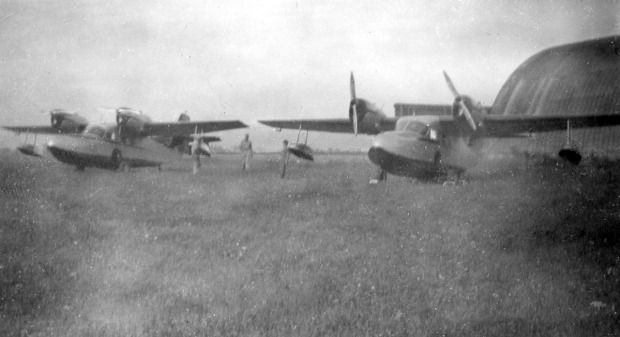
Using the giant eight-seat commercial G-21 Goose as a design reference, Grumman engineers designed a more petite five-seat cabin amphibian, The G-44, in 1940. The G-44 received its FAA-type certificate on April 5, 1941, and became a service aircraft for the US Coast Guard as the J4F-1 later that year. Twin Ranger engines rated at 200HP provide the power of spinning wooden fixed-pitched propellors.
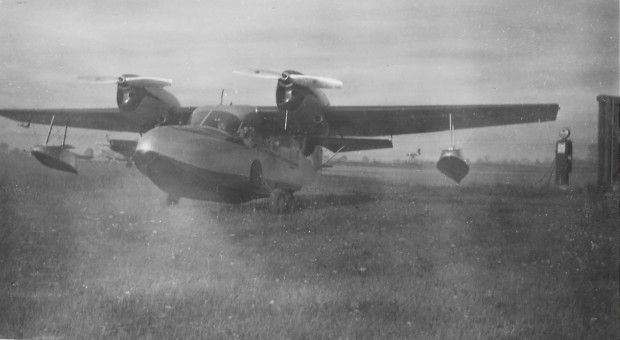
The US Navy receives the J4F-2 in the following year, 1942. Unfortunately, I could not locate any upgrades to the J4F-2, but I’m sure there are. In 1946, the G-44A debuted with significant improvements, including a more profound bow, step vents, and upgraded mechanical equipment.

Now, here’s where things become a bit intertwined regarding the development of the following two amphibians that my father operated at Buffalo Air-Park and Pompano Airport in Florida. I have yet to discuss Tony’s involvement with Pompano, but from what I have so far, it was a failed part of ownership that resulted in financial loss and emotional stress upon my father. He was also struggling with health issues, which sometimes clouded his judgment. I’ll touch more on Pompano when I have the facts together in a future article.
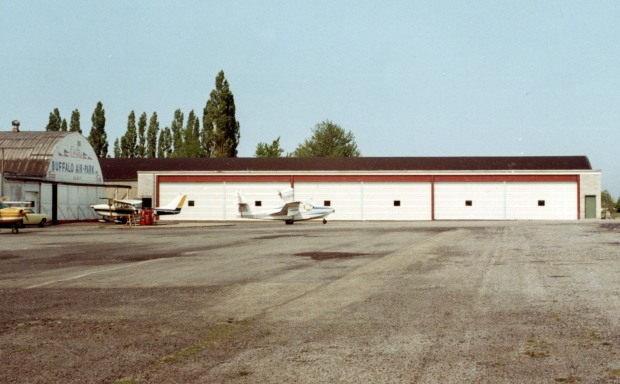
N2019L. A 1967 blue and white Lake LA-4, serial number 353, was parked on the tarmac at BAP, waiting for the next rental or Tony to jump in and give a scenic ride to Lake Erie. This Lake is a four-seat amphibian powered by a single 180HP Lycoming engine. Here’s an interesting fact.
The engineers at Lake designed the LA-4 from the Colonial C-2 Skimmer IV with a few modifications. As a result, the LA-4 has an increased wingspan and length over the C-2 and is 50 lbs heavier, weighing 2400 lbs.
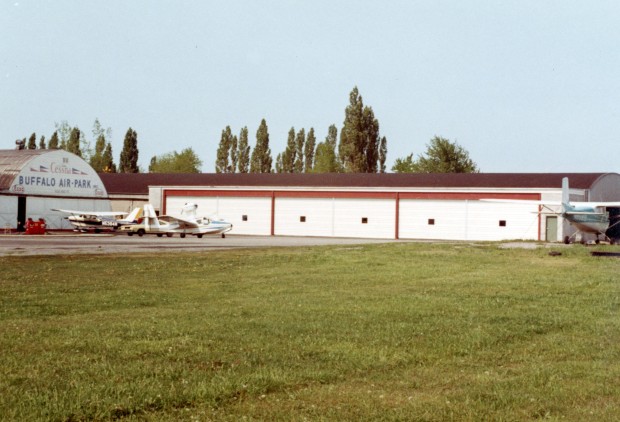
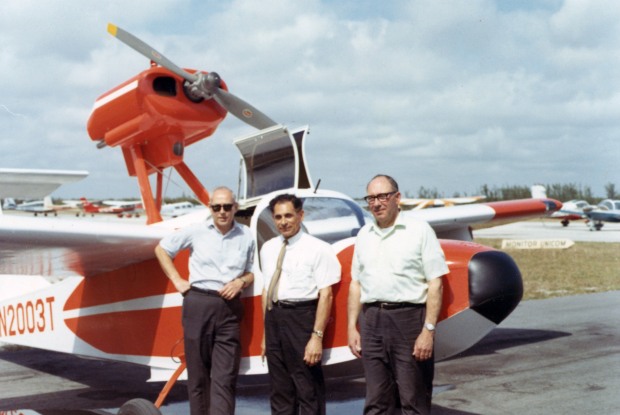
My favorite is the orange and white 1970 Teal TSC-1A, designed and built by David Thurston of the Thurston Aircraft Corporation! I am fond of this amphibian because of my time with my father when he took me for “joy” rides. I say joy loosely because I was terrified the first time we landed in a small lake in Florida. The landing was OK, but he opened the canopy and asked me to splash my hand into the water after he shut down the engine. What, are you kidding me? I was only 4 or 5 at the time, and my adolescent brain thought we were sinking because of how the plane settles into the water when floating.

I remember the look on his face when I started to cry. At first, he smiled as if he didn’t understand the problem, but then he realized I was freaking out. So he tried to calm me by explaining how an amphibian works and that it would be alright. No luck. I wasn’t having any part of it, and his only option was to close the canopy, start the engine, and take off. As soon as I felt the airplane start to lift out of the water, I stopped crying, calmed down, and enjoyed the flight back to the airport.

We spent more time together in that Teal, and I became acclimated to the amphibian over time. We even brought two fishing poles on one occasion but didn’t catch anything. It could be more comfortable to cast a line without limiting a small area to work. Your only option is straight out either side, being careful not to hit the wing. I miss that Teal with its big black cushiony nose and, most importantly, our adventures!

N2003T was unique. This particular amphibian has a serial number of 3 out of the 15 built. I’d like to know how Tony acquired the third one off the assembly line, but he did have many connections due to his employment with Republic.
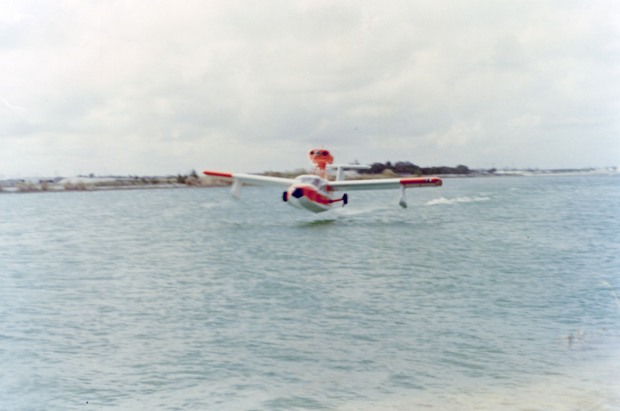
The Teal’s design comes from Mr. Thurston’s prototype, the TSC-1 T-Boat, which incorporates a boat hull without any landing gear. Later refinements of adding a retractable landing gear resulted in the first flight of N1968T in June 1968. During the test flight, the engineers thought adding a dorsal fin would improve longitudinal stability. Also, a single fuel tank located in the hull would be beneficial. As a result, the FAA issued a type certificate on August 28, 1969.
Now back to David B. Thurston. I won’t go into much detail on David, but I will discuss a rough timeline with his involvement regarding the C-2 Skimmer and the Teal. Many websites go into great detail about Mr. Thurston, and I found Steinar Saevdal’s article about Mr. Thurston interesting. Here’s a link to Mr. Saevdal’s website, SeaBee.info, and I highly recommend checking out his site! His home page is titled “Steinar’s Hangar,” where he features many other topics, including the Republic Seabee, the Trident Trigull, and the aircraft of Norway.
Grumman Aircraft Engineering Corporation of Bethpage, Long Island, NY, hired David Thurston in 1940 as a design engineer. David is involved with many projects throughout his career with Grumman but realizes that he must work full-time on the amphibian project he started in 1946. So he resigned in January 1955 to form the Colonial Aircraft Corporation with former classmate & engineer at Republic, Herbert P. Lindblad.
After the formation of Colonial Aircraft in Huntington Station, NY, the two men move the entire operation to Sanford, Maine, where they start the manufacturing and marketing the C-1 Skimmer. After nine years of development, the C-1 received an FAA-type certificate on September 19, 1955.
The C-1 needed improvements; thus, the C-2 Skimmer IV is Colonial’s next and final amphibian. The C-2 was certified on December 24, 1957, and what a wonderful holiday gift! But, unfortunately, it was short-lived, and Mr. Thurston sold the company to Jack Strayer in 1959. Jack developed the C-2 into the prototype of the soon-to-be Lake LA-4 and an unsuccessful business plan for Lake Aircraft.
Unfortunately, due to slow sales and the lack of interest in the LA-4, Mr. Strayer sold the manufacturing rights to John Dalton in 1962, where he formed the Consolidated Aeronautics Corporation. But, too, he finds it challenging to acquire funding for production and sells all the rights to Herbert P. Lindblad and Merlin L. Alson, where they successfully form the Lake Aircraft Corporation.
Did you see what just happened? Mr. Lindblad purchased back the rights to the LA-4, technically the C-2, that he co-founded when he and David Thurston first formed the Colonial Aircraft Corporation after David sold it out from under him in 1959. I’m going out on a limb here, but maybe the two men had a falling out, and that is the reason for the desolvation of Colonial. Just a thought.
What happened to David Thurston, you ask? Good question and I’m interested as well! Mr. Thurston formed the Thurston Erlandsen Corporation, a research, and development firm, in March of 1961, where he acts as president. He sells his financial interest at the beginning of 1966 to raise capital for his new company.
In July 1966, David established the Thurston Aircraft Corporation in Sanford, Maine, to produce the TSC-1A Teal. The maiden flight of this amphibian was in 1968, and it received an FAA-approved certificate in August 1969. Unfortunately, sales were slow due to an economic turndown, and Mr. Thurston had no choice but to cease all operations in 1971 after producing nineteen amphibians. Schweizer Aircraft Corporation of Elmira, NY, purchased the manufacturing rights of the Teal program in December of 1971.
Mr. Thurston joined the Schweizer Aircraft Corporation as an engineering manager in 1972 but resigned in 1976 to form yet another company, the Thurston Aeromarine Corporation as an aircraft design consultant. David was passionate about aircraft design but was never satisfied with the final construction or the responsibilities of running a manufacturing company.
Thank you for taking the time to read this post; I didn’t intend this article to be so long. It always amazes me the many stories intertwined in aviation history! Leave me a comment, and I’ll see you in my next post!


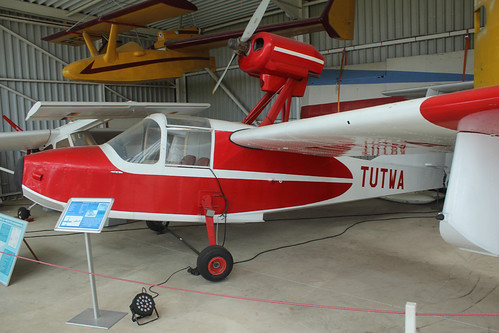
Leave a comment